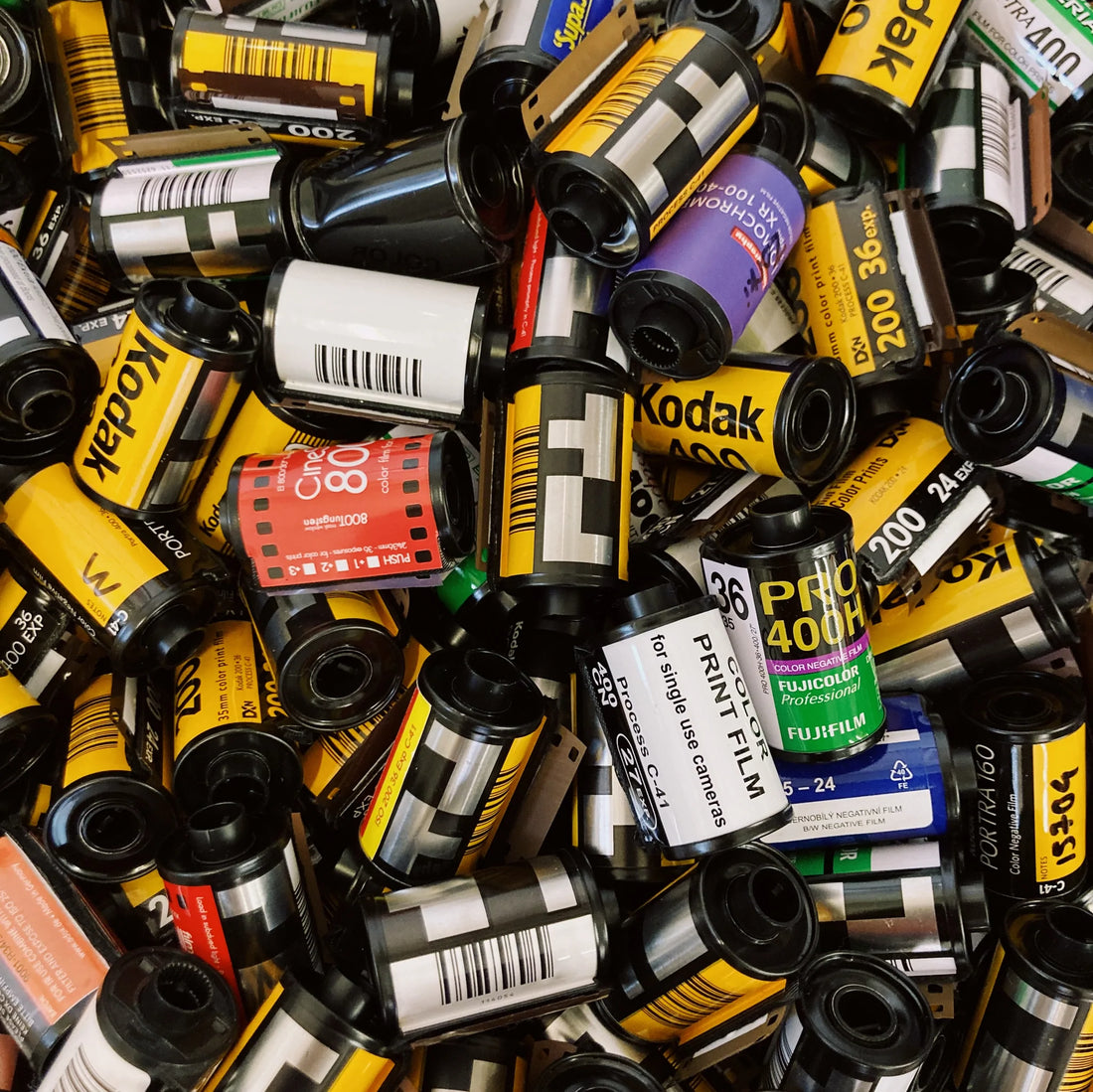When you walk into your local camera store/photo lab or log onto your favourite analog photography website to buy some film, there’s usually a wall of various different films with all sorts of confusing names, numbers and even expiry dates (no, it’s not edible) scattered around the place: Kodak, Fuji, Ilford… 35mm, 120, 4x5… ISO 100, 200, 400… B&W, E6, C41… etc.
If you haven’t done your homework, this can all be very confusing and very off-putting to a beginner! The purpose of this blog is to help breakdown all of this information and help anyone understand what these things mean, and ultimately help you choose what film you need to buy.
For most purposes we can think of there being two types of film: colour film and black and white film - one captures images in colour, the other captures images in monochrome (aka black and white), simple! The slightly confusing part is the way these different films are processed by the lab. I’ll go into this in more detail in a little while but the most important things to know are whether the film will fit in your camera and if it will work for what you’re planning to shoot!
35mm film is the most common and easily available type - nearly all point and shoot cameras, SLRs and rangefinder cameras use 35mm film. 120 film (aka medium format) is the big brother of 35mm, it allows you to capture more detail in your image because the film is physically much larger than 35mm. Above this, you have 4x5” or 8x10” etc. large format film, the even bigger brother of both 35mm and 120, it’s expensive and slow to use, but captures tons of detail (a 4x5 image is 15 times bigger than 35mm frame!)
ISO is the number you see next to the name of your film: Kodak Portra 400, Fomapan 200 etc. What this refers to is how sensitive the film is to light - lower number: less sensitive, higher number: more sensitive. Simple! So if you’re shooting in the Alps on a sunny day you want a very low ISO, because it’s going to be super bright. If you’re shooting a nightclub, handheld without flash, you need a very high ISO, because it’s going to be dark.
Expiry dates for film are a highly debated topic, do they matter? If so, how old is too old? Well, it all depends… Because film is sensitive to light (and heat!) it gradually, over time, loses its sensitivity and won’t behave how it would when it was new. This gradual degradation of film is why some people keep their film in the fridge or even the freezer because, like food, this slows down the process of it going bad. Sometimes expired film will produce interesting results - strange patterns and weird colour shifts and these can be great to experiment with. Unfortunately because you usually don’t know how expired film has been stored, it’s a bit of a gamble. It is often cheaper than new film so why not give it a shot and see what you think?
That’s pretty much all you need to know but there’s even more to it when it comes to the processing side of things. If you want to know about that, then read on!
There are two types of colour film: Negative film (processed in C41 chemistry) and Positive/Slide film (processed in E6 chemistry). Negative film is the most common one, it’s probably the stuff most of your old family snapshots were taken on and is what the majority of people into film use today. Positive film is basically the opposite of this, instead of capturing a ‘negative’ image of whatever you point your camera at, it captures the scene more-or-less exactly as it looks right onto the film. Positive film was very popular before digital screens and digital projectors existed, when people would get the whole family round for a slide show and bore them with where they’d been on holiday!
B&W film comes in two main types too: Traditional black and white film (processed in B&W chemistry) and Chromogenic black and white film (processed in C41 chemistry). Traditional black and white films are much more common and there are lots of different varieties, this type of film is fairly unchanged since early photographic processes and still works on the same principle as many old processes from the early 1900’s. It is usually processed by hand and not only is there a lot of different films to choose from, there are a lot of different developing chemicals to choose from too! All of them will give subtly different results. Chromogenic black and white film (such as Ilford XP2) is basically a B&W film that can be processed in colour negative chemicals. The reason for this is that most 1-hour photo stores can only process colour negative film, so if you want a set of B&W prints, but don’t want to wait for someone to hand-process your film, this is exactly what you need!
Outside of all these films, there’s some weird stuff like Infrared film, ECN-2 film (cine film) and Aerial reconnaissance films. This post covers 99% of the films you’re likely to use but if you want to know more about weird and wonderful experimental films, we’ll cover those in the future. Now go out, buy some film and get shooting!

